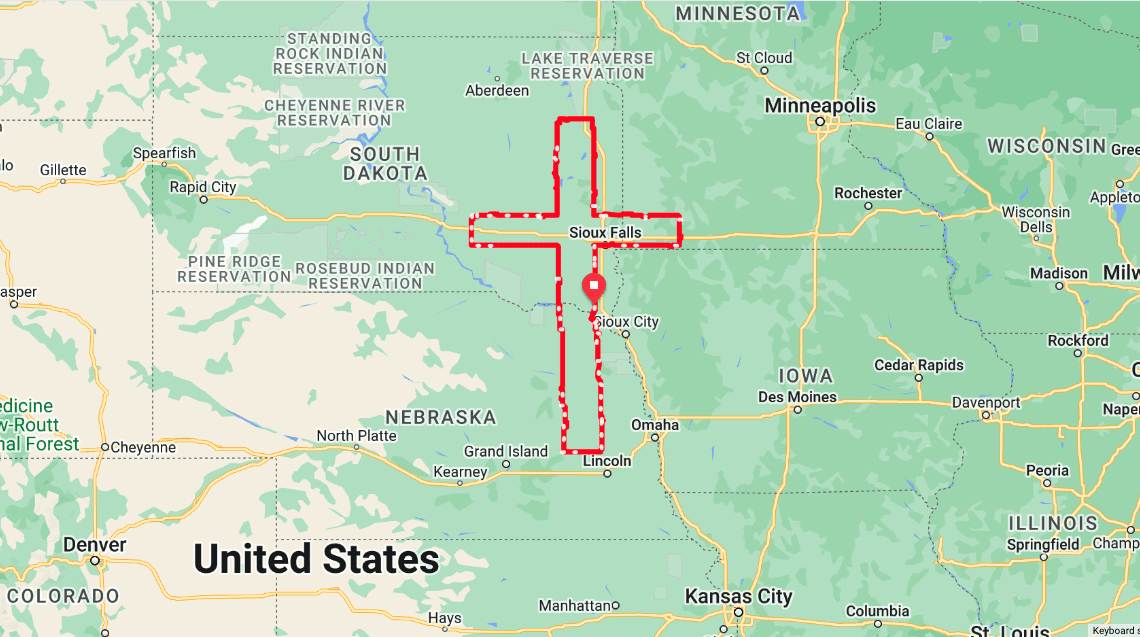The group of four friends recently recognized by Strava (opens in new tab) and the Guinness World Records for creating the largest ever GPS drawing made by bicycle (opens in new tab) had better enjoy their fame while it lasts because an ultracyclist from Indiana is coming for the record this spring.
The current record takes the shape of a huge velociraptor (opens in new tab) in the middle of France. This intricate 1025-kilometer (763-mile) design took the cyclists 43 hours, 47 minutes and 26 seconds over six days to complete.
But with his cross design already approved by Guinness World Records, Dave Schweikert hopes to break the record by nearly 300 miles.
Schweikert, an engineering manager at Zipp and already a two-time world record holder, has been planning his endeavor for over a year. Come May, he aims to break the Guinness World Record with a 950-mile bike route in the shape of a colossal Latin cross (opens in new tab).
“My backstory is that I like taking on big cycling challenges. And I always do these challenges for charity,” Schweikert told Cycling Weekly. “Doing crazy things that are a little bit fun and bring some attention and raise money is kind of my niche.”
As with his previous ‘challenges,’ Schweikert will raise funds for World Bicycle Relief (WBR), (opens in new tab) an international non-profit organization specializing in large-scale bicycle distribution programs in developing countries around the world.
The world’s largest cross
(Image credit: Screen grab from RWGPS)
“The cross has meaning for me personally but for the message I want to share with people, you don’t have to be religious for it to resonate,” said Schweikert. “It’s about me using my ‘gifts’, if you will, of riding a bike long distances to help others. The idea is around doing something that comes naturally to you to help others. I hope that is what resonates.”
Despite the simple appearance, Schweikert said the cross was neither his first design nor the easiest.
“I spent dozens and dozens of hours trying to find enough straight roads. And that’s why I chose where I’m doing it because it’s really hard, for an image this big, to find that many straight roads without a mountain or a lake or something that gets in the way,” he said.
The, what’s likely to be, world’s largest Latin cross will traverse three state lines — Nebraska, South Dakota and Minnesota— and use unpaved, gravel roads for at least 35% of its distance. The rough terrain will slow the pace but even…

